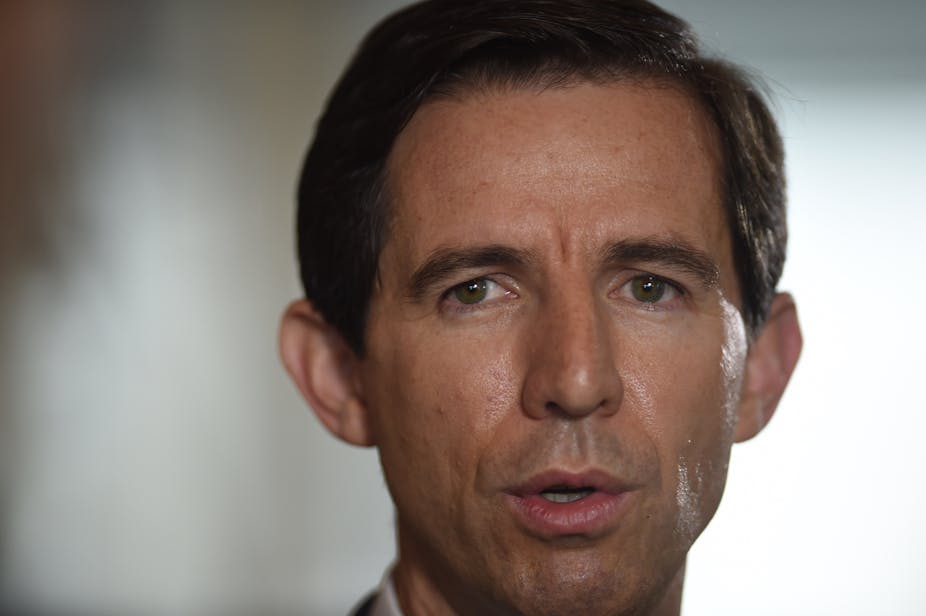A crackdown on the widely rorted vocational education and training student loan program aims to reduce outstanding HELP debt by more than A$7 billion across the forward estimates and $25 billion over a decade.
Tight caps on course loans and tough entry requirements for providers, designed to stop scams and exploitation, are among the features of the revamped program, announced by Education Minister Simon Birmingham.
There will be three bands of loans, with caps of $5,000, $10,000 and $15,000 set for courses, based on the cost of delivering them. The minister will be able to alter the caps during the first year, and the scheme will be reviewed after the first 12 months.
To be eligible, courses will have to be considered aligned with the needs of industry so graduates will likely have good job prospects.
Providers wanting to access VET student loans will be assessed much more rigorously, including their relationship with industry, student completion rates, employment outcomes of their courses, and their track record as education institutions.
Students will have to engage with the program’s online portal to show they are active and legitimate enrolments.
There will be strengthened compliance and payment conditions, including paying providers in arrears, the ability to cap provider loan amounts and student numbers and to limit course scope, powers to suspend poor performing providers from the scheme, cancel their payments and revoke their approval.
Providers under the scheme will not be able to use brokers or directly solicit prospective students such as through “cold calling”, and the subcontracting of training will be limited.
The redesigned “VET Student Loans” program will start from January 1, 2017. But the 144,000 present VET FEE-HELP students can opt to to be “grandfathered” to the end of next year.
Birmingham said all private education institutions would have to apply to be eligible for the new program, to “weed out unscrupulous providers who have plagued the VET FEE-HELP scheme”.
While public providers and TAFEs will be automatically eligible to offer the new loans they will face the same conditions relating to enrolments, loan caps and student participation.
The government was adopting a “belt and braces approach” to safeguards, Birmingham said. Central was “the need for providers to go through a rigorous application process and extensive monitoring and evaluation to ensure they are delivering education that students and employers value and that taxpayers are willing to continue supporting”.
The changes would “hit the reset button” on Labor’s flawed scheme, he said.
The scheme had blown out from costing $325 million in 2012 to $1.8 billion in 2014 and $2.9 billion in 2015. Student numbers had jumped by almost 400%, fees more than doubled and loans increased by 792%.
Birmingham said that while measures the government had earlier put in place stemmed some of the losses in VET FEE-HELP, with total 2016 loans projected to be about 45% lower than in 2015, “it is clear that a completely new program is essential to weed out the rorters and restore credibility to VET”.
The changes now needed to be legislated as soon as possible for the January start, he said.
Labor went to the election proposing a major overhaul of the vocational student loan arrangements.

